What is Marketing Mix?
Definition of Marketing Mix: Marketing Mix is defined as a business model, traditionally based on 4Ps : product, place, price, and promotion. Marketing Mix was described as “a series of tools that are used in marketing by a company to achieve its marketing goals in the target market.” Therefore, the marketing mix applies to four specific types of marketing decisions: product, place, price, and promotion. Marketing strategy has been in effect for centuries, but marketing theory originated in the twentieth century. Marketing Mix expanded version has been used in service marketing, which usually involves 7 Ps, consisting of an initial 4Ps (product, place, price, and promotion) expanded by processes, physical evidence, and people.
Some Service marketers refer to the 8 Ps, which includes 7 Ps plus performance. Marketing Mix is the key component for making decisions about marketing management. In 1960 4 Ps of Marketing Mix was first published.
Marketing Mix attributes products and promotions are considered by the companies to increase the number of customers. Other Aspects like place and price are also considered by the companies.
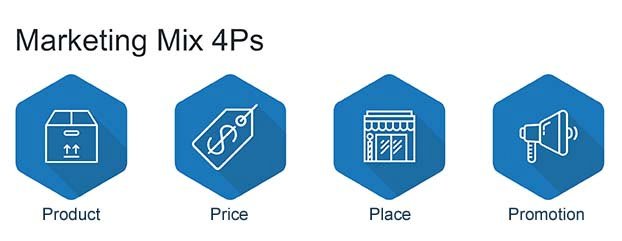
History Or Evolution of Marketing Mix
Prof. James Culliton of Havard University has first mentioned the marketing mix in the late 1940s.
Culliton published an article in 1948 called Marketing Cost Control which focuses on the term ‘mixers of ingredients’ in the context of marketers. A few years later, Prof. Borden Neil, presented a paper describing the marketing mix and credits himself with popularizing the ‘marketing mix’ term. He has continuously used the phrase, ‘marketing mix’ since the late 1940s, according to Borden’s account.
Till 1960 marketers are unable to achieve any clear view of components to be included in the marketing mix. 4 Ps was suggested by E.Jerome McCarthy in 1960, in its modern form.
This method was popularized by Phillip Kotler he spread the concept 4 Ps. McCarthy’s 4 Ps is widely embraced by researchers of marketing and practitioners alike.
A Paper presented in AMA Conference on Service Marketing in 1980 collectively suggests that service marketers were thinking of revising the general marketing mix based on an assumption that services were fundamentally different from goods and thus needed different tools and strategies.
7Ps was suggested by Booms and Bitner in 1981 suggested a 7 Ps model, consisting of 4Ps expanded by the physical evidence, process, and people.
A range of suggestions have been made in the context of service marketing most of the service marketers have expanded 7Ps by performance as the 8thP in Marketing Mix.
What are the elements of the marketing mix? or Marketing Mix Elements
The marketing mix (4Ps) as suggested by marketer and academician E. Jerome McCarthy, provides the business decision-making process. After then the Marketing Mix suggested by McCarthy’s has become one of marketing’s most enduring and generally recognized systems.
Product:
A product refers to an object which satisfies the needs or wishes of the customer. Things (products) may be tangible or intangible (services, concepts or experiences).
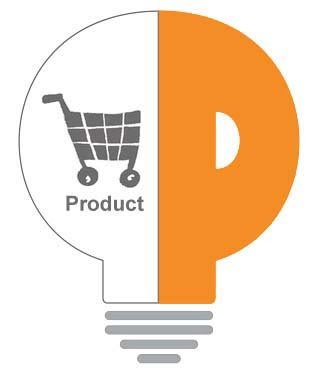
Marketing Decisions based on Products:
- Product design – features, quality
- Product range, product lines, and product mix
- Branding of products
- labeling and Packaging
- Services (after-sales service, complimentary service, service level)
- Warranties and Guarantees
- Returns
- Analyze Product Life Cycle
Price
Price refers to how much a customer pays for a product. Or price can also apply to how customers are interested in making a sacrifice to buy a commodity (i.e. time and effort). Or Price is the one aspect that has revenue implications. Or Price also requires customer-perceived interest factors.
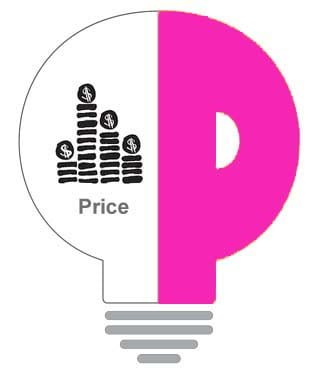
Marketing Decisions based on Price:
- Pricing strategy
- Pricing tactics
- Setting up prices
- Allowances – e.g. margin for distributors
- Price after discount for customers
- Credit, payment methods and Payment Terms
Place
Place refers to providing priority to consumers. Considers offering customer comfort.
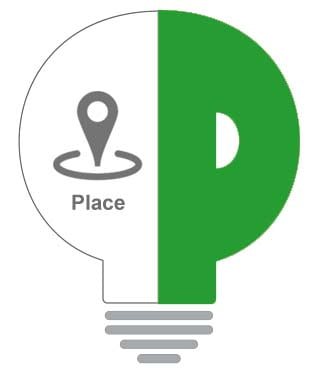
Marketing Decision based on place:
- Strategies such selective distribution, as intensive distribution, exclusive distribution, and Franchising
- Market coverage and Reach
- Channel partner selection and channel partner relationships
- Decisions related to Locations
- Inventories
- Transport, Logistics, and warehousing
Promotion
Promotion corresponds to marketing communications. Promotion involves such elements as advertisement, PR, direct marketing and promotion of sales.
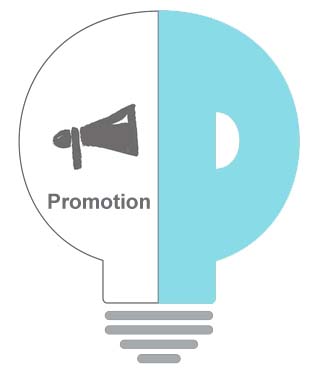
Marketing Decision based on Promotions:
- Promotional mix – an appropriate balance of advertising, sales promotion, direct marketing, and Public Relations
- Message strategy-what to convey or communicate
- Which media has to be used to communicate and reach a large number of customers.
- Frequency of Promotion is the most important marketing decision.
In Short Marketing Mix Includes:
- Product refers to what is offered for sale by the company, which can include products or services. Product choices include “quality, features, advantages, style, design, branding, labeling, services, warranties, life cycles, investment, and returns.”
- Price applies to “inventory pricing, sale pricing, special deal pricing, lease or payment terms” decisions. Price indicates the actual cost to the buyer to buy the commodity, which can include both psychological (time and Energy), and physical costs.
- Place is referred to as direct or indirect sales networks, regional distribution, geographical scope, retail stores, store locations, inventory, catalogs, order fulfillment, and logistics. Place refers to either the actual place where a company is doing a company or the networks of distribution used to enter customers. A place may apply to a retail store but is primarily referring to virtual stores such as “catalog of mail order, mobile call center, or website.”
- Promotion refers to “the strategic communication used to make prospective buyers aware of the product and to convince them to further explore it.” Promotional components include “media, public relations, product incentives, and direct marketing.”
What are the 7ps of the marketing mix? or Expanded 7Ps of Marketing Mix
By the 1980s, several theorists had called for an expanded and revised model which would be more useful to marketers in services. During the annual AMA Conference on Services Marketing, the possibility of expanding or changing the marketing mix for services became a central subject of debate, drawing on earlier analytical works pointing to several significant issues and shortcomings of the 4 Ps model. The papers discussed at that conference collectively suggest that service marketers were dreaming about revising the general marketing mix based on an assumption that services were radically different from goods and thus needed different resources and techniques. Bitner and Booms suggested a 7 Ps of marketing model in 1981, consisting of Marketing Mix (4 Ps) plus physical evidence, process, and people.
People
Definitions:
Human dynamics leading to service delivery. Or Support personnel who represent the ideals of the company to clients. Or Interactions around customers. Or Employee and consumer interaction.
- Marketing Decision based on People
- Staffing, Recruiting, induction, and training
- Uniforms of employees
- managing waits and Queuing systems
- Handling Customer complaints, and service failures
- Maintaining and managing social interactions
Process
Procedures, processes, and operation flow by which service is provided.
Marketing Decision based on Process
- Process architecture
- Blueprinting OR flowcharting business processes
- Standardization vs modification decisions
- Diagnosing fail-points, crucial accidents, and system errors
- Management control and managing performance
- Review of resource needs and allocation
- Developing and evaluating key performance measures (KPIs)
- Compliance with best practices Manua operations planning
Physical evidence
The environment where service occurs. Or space within which service staff and customers interact. Or tangible goods that promote service efficiency (e.g. appliances, furniture). Or artifacts that remind consumers of a success in service.
Marketing Decisions based on Physical Evidence
- Facilities (e.g. equipment, furniture, access, etc)
- Spatial layout (e.g. efficiency, functionality, etc)
- Signage (e.g. symbols, directional signage, other signage, etc)
- Interior design (e.g. color schemes furniture, etc)
- Ambient conditions (e.g. air, noise, temperature, etc)
- Design of livery (e.g. brochures, stationery, menus, etc.)
- Artifacts: (e.g. mementos, souvenirs, etc.)
In Short
- People (Employees) are required for selling products and services. Employees serve the service. People are not consumers of the technical, hospitality of financial service sectors, but rather the products themselves. If people become the commodity, they affect an organization’s market image almost as much as any measurable consumer goods. Through a brand strategy standpoint, it is important to ensure that workers represent the business in line with wider advertising strategies. It is easier to do because customers feel like they’ve been handled equally and receive sufficient money to sustain their everyday lives.
- Process refers to a “set of activities resulting in product benefits being delivered.” A process could be a sequential order of tasks undertaken by an employee as a part of their job. It can represent sequential steps taken by several different staff whilst trying to complete a task. Many employees are in charge of running different systems at once. For example, a restaurant manager will track employee efficiency, ensuring sure procedures are followed. We are also supposed to supervise as long as customers are greeted, seated, fed, and led out quickly so that the next customer can continue this process.
- Physical evidence refers to service experience non-human components as machinery, appliances, and services. It can also apply to the more general elements of the setting in which the experience with service happens including interior architecture, color schemes, and arrangement. Many types of tangible documentation provide permanent evidence that the service has existed, such as souvenirs, gifts, invoices, and another artifact livery. The physical proof, according to Booms and Bitner’s context, is “the service provided and any tangible objects which promote the service’s success and contact.” For buyers, physical evidence is significant, as the actual objects are proof that the vendor has (or has not) delivered what the consumer wanted.
Why is the marketing mix important? or Importance of Marketing Mix
All marketing mix aspects are equally important. These make up a business plan for an organization and if done properly, will be a huge success to it. But handled wrong and it might take years for the company to recover. The marketing mix requires a lot of awareness, market analysis, and multi-person collaboration, from consumers to trading to manufacturing and many others.
Advantages of Marketing Mix
Some of the Benefits of Marketing Mix to organizations are :
- It provides a worthwhile resource allocation guide:
Increasing marketing activity requires the careful allocation of human and financial capital. Marketing Mix is used to allocating resources and help to increase the satisfaction level of customers and benefit the company.
- Responsibility Allocation:
Marketing’s creative and challenging job is teamwork and part of the marketing process involves assigning responsibilities to participants of the marketing team. Some are responsible for stock management, some for sales, and even others for actual delivery by way of specialization.
Because the marketing team has the best combination on hand and in mind, the assignment of individual and company tasks is always simple and logical; which is because, before arriving at the ‘right balance,’ much housework or punching practice is performed based on logic and scientific results.
- Help in Cost-Benefit Analysis
Resources that have limited alternative uses are to be wisely allocated to the requirements of the mixed input which are intended to be paid out. On an illustrative basis, it can be said that the number of salespersons can be increased by the company to improve sales; or by increasing the ad budget.
One can alter the expectation value of the product or service, thereby building new and increased demand from both existing and potential buyers; or whether to speed up and expand the distribution system network, which could produce better results.
Such an exercise is only possible if there is a marketing program that identifies the components of the mix, ensuring that the market response is encouraging.
- Facilitation of communication process:
Help to decide how product features and products are conveyed to the customers. What are the channels and benefits of using a particular channel for communication? Thus Marketing Mix helps to decide the communication process.
You Can Find Some examples of Marketing Mix are :
Quick Snapshot to Marketing Mix
Marketing Mix is defined as a business model, traditionally based on 4Ps : product, place, price, and promotion. Marketing Mix was described as “a series of tools that are used in marketing by a company to achieve its marketing goals in the target market.
The marketing mix is used to analyze the 7Ps in Service Marketing and 4 Ps in Normal Marketing Scenario. Marketing Mix is used because we want to analyze the overall strategy of a business.
1. The Promotional Mix does not recognize customer behavior but is internally oriented. 2. The Marketing Mix does not consider Customer Relationship Management. 3. The product mix does not take into account the particular aspects of the selling of services. 4. The product can be seen in the singular, but the majority of businesses do not market the product in isolation. 5. Sellers offer goods, brands, or product lines, all intertwined in the view of the consumer.

